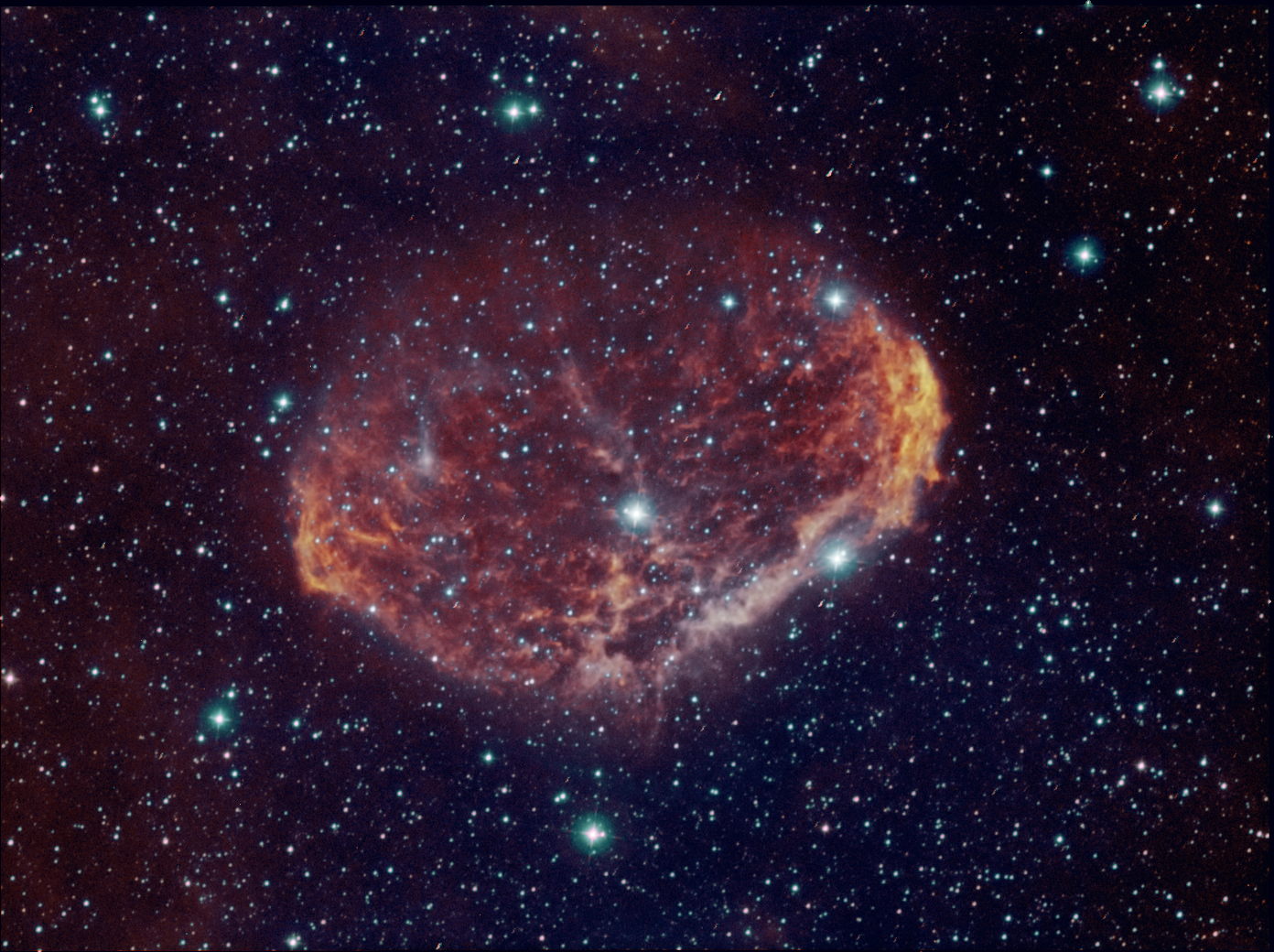

Image Centered on Ra. 20 : 12.0 (hours : minutes) Ra.+38 : 21 (degrees : minutes)
Crescent Nebula NGC 6888
Wide field Image Takahashi Fs60c
Information
The Crescent Nebula Is an Emission Nebula in the Cygnus constellation. The color image above was produced by combing two separate Black and white images of the same object with selectively filtered light in Photoshop. The method I used was 1st used by Steve Cannistra and is unique in that it allows for color imaging by combing two filtered exposures, in this case Ha and OIII emissions. The two images are combined and then used to produce a synthetic green channel which becomes the green channel information in the final RGB image. I prefer this method of color imaging over The traditional Narrowband color imaging which usually requires Ha, OIII and SII to create a 3 color RGB image. Using only two channels has the obvious advantage of producing an image in shorter time since one does not need to expose an additional channel which can take as long 5 to 10 hours longer depending on how deep one wants to go. I also prefer the more natural star colors this method produces, no more stars with odd looking Magenta or red overtones!
The following information was obtained from the online WebPages of the European Southern Observatory "ESO"
The central star of NGC 6888 is a WN 6 Wolf-Rayet with a temperature of about 55.000 K. Its catalogue number is HD 192163 or WR 136. The structure of the shell gives evidence for the theory that a W-R star could evolve from a red giant.
In it's red giant phase HD 192163 ejects it's outer layers as consequence of it's increasing size. About 200.000 years later, a very short time for a star, the immense radiation of the exposed inner layers causes heavy stellar winds of gases (characteristics of a Wolf-Rayet Star). They flush with great velocities into the surrounding space. As the speed of this stellar wind is much higher then the one ejected by the former Red-Giant star, a crash is the consequence. The result is a shell and two shockwaves. One moves outwards, the other inwards forming a very hot X-ray emitting bubble.
Optics and Exposure Info.
Telescope, Vixen R200ss 8 inch Newtonian at F4 (Fl 800mm) with a Televue Coma Corrector and aftermarket Moonlite accessories focuser.
Mount, Losmandy G11 with Gemini control electronics
Imager, Starlite-Xpress SXV-h9 using Schuler Ha and OIII filters
Exposure data, Ha = 90 minutes total with 5 min sub exposures, OIII= 90 minutes total with 2 minute sub exposures
Images acquired with Astroart and aligned then combined in Maxim Dl. Final RGB composite processed with Photoshop Cs
Images acquired from my backyard - " Dirt Clod Observatory" in Antelope California